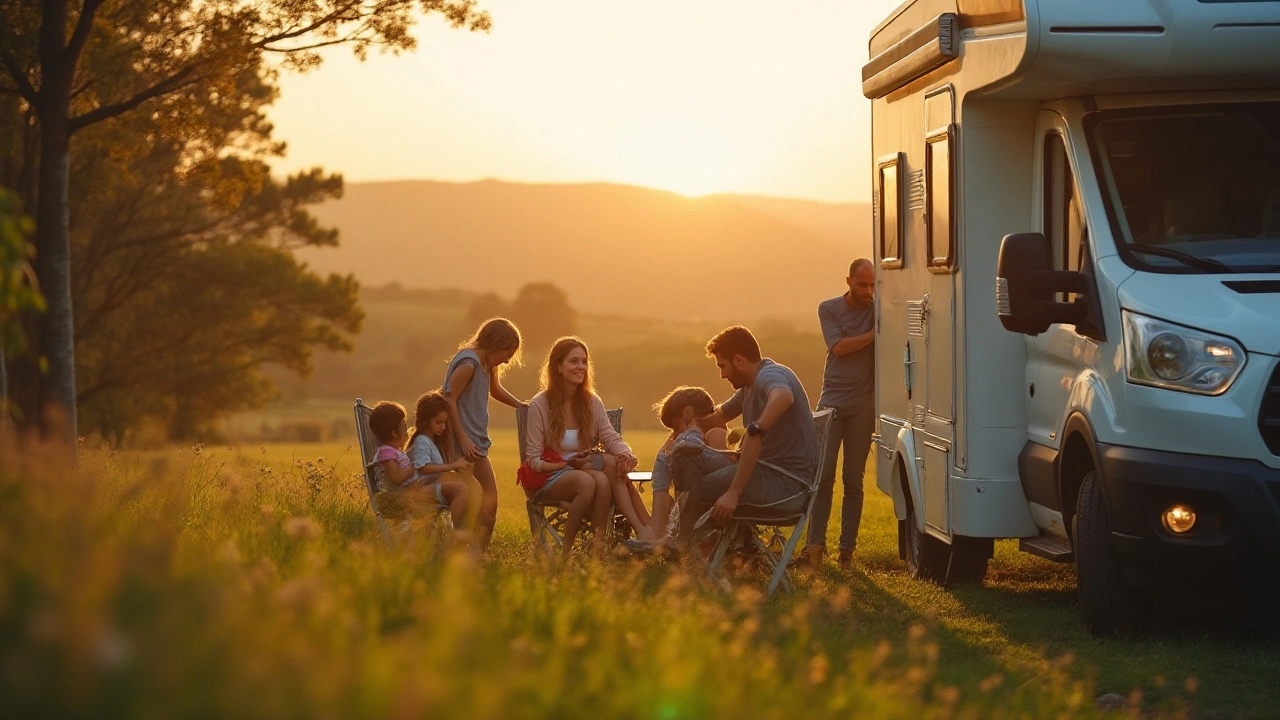Camping Electricity Guide: Power Up Your Site Safely
When you park your motorhome or pitch a tent, the first thing you think about is … power. Without electricity you can’t charge your phone, run the lights, or keep the fridge humming. This guide shows you the basics of campsite electricity, what to look for, and how to stay safe.
What you’ll find at a typical campsite
Most UK campsites offer a 13‑amp socket called a “site hook‑up”. It’s the same type you see at home, but it’s usually on a raised pedestal. The socket is fed either by the site’s own generator, the local grid, or a combination of both. Some sites also have 230‑volt “full‑site” connections for larger motorhomes that need more juice for heating or air‑conditioning.
When you arrive, check the socket for any signs of damage – cracked plastic, loose pins, or scorch marks. If anything looks off, ask the staff to inspect it before you plug in.
Getting connected safely
First, turn off all appliances in your motorhome or caravan. Then plug your own cable into the site socket – never use an extension cord or a cheap adapter. Once it’s plugged in, turn the power on at the site’s control box and then switch on your own breaker. If a circuit trips, double‑check which appliance caused it and don’t overload the socket.
Good practice is to keep a short, heavy‑duty cable in your vehicle. It’s easier to replace a short cord than to chase a long one around a windy site. Also, never run a cord through a doorway or under a rug – that can cause wear and a fire risk.
If the site doesn’t have a hook‑up or you need backup power, a portable generator or a solar panel kit can fill the gap. A small inverter‑generator (about 2,000 W) is enough for lights, a fridge, and charging devices. Place the generator outside, on a flat surface, and keep it at least two metres away from the tent or motorhome to avoid carbon monoxide buildup.
Solar panels are quieter and can charge your battery while you’re out exploring. Look for a fold‑out kit with a charge controller – it protects your battery from over‑charging. Pair it with a deep‑cycle battery and you’ll have power for nights when the site’s electricity is off.
To keep your devices safe, use a surge‑protecting power strip. It guards against sudden spikes that can ruin phones or TVs. Check the strip’s amp rating and make sure the total load of everything you plug in stays below the site’s 13‑amp limit.
Energy‑saving tips make a big difference. Swap incandescent bulbs for LEDs, run the fridge on a low setting, and turn off the heater when you’re inside the vehicle. A small solar lantern can replace a wall‑plug light and lasts all night on a single charge.
Finally, always carry a basic electrical safety kit: a portable fire extinguisher rated for electrical fires, a voltage tester, and spare fuses for your motorhome. Knowing how to check voltage quickly can save you a lot of hassle.
With these tips, you’ll feel confident plugging in at any campsite, whether you’re staying in a cosy pitch in Teesside or venturing further north. Power up, stay safe, and enjoy the freedom of the road.
Essential Tips for Using Electricity While Camping
Discover how to keep your devices and appliances powered while enjoying the great outdoors. This article explores various methods to access electricity while camping, from using electric hookups at RV sites to portable generators and solar solutions. With practical tips and considerations for environmental impact, this guide helps you prepare for a comfortable and sustainable camping trip. Stay connected and make the most of your wilderness experience.
